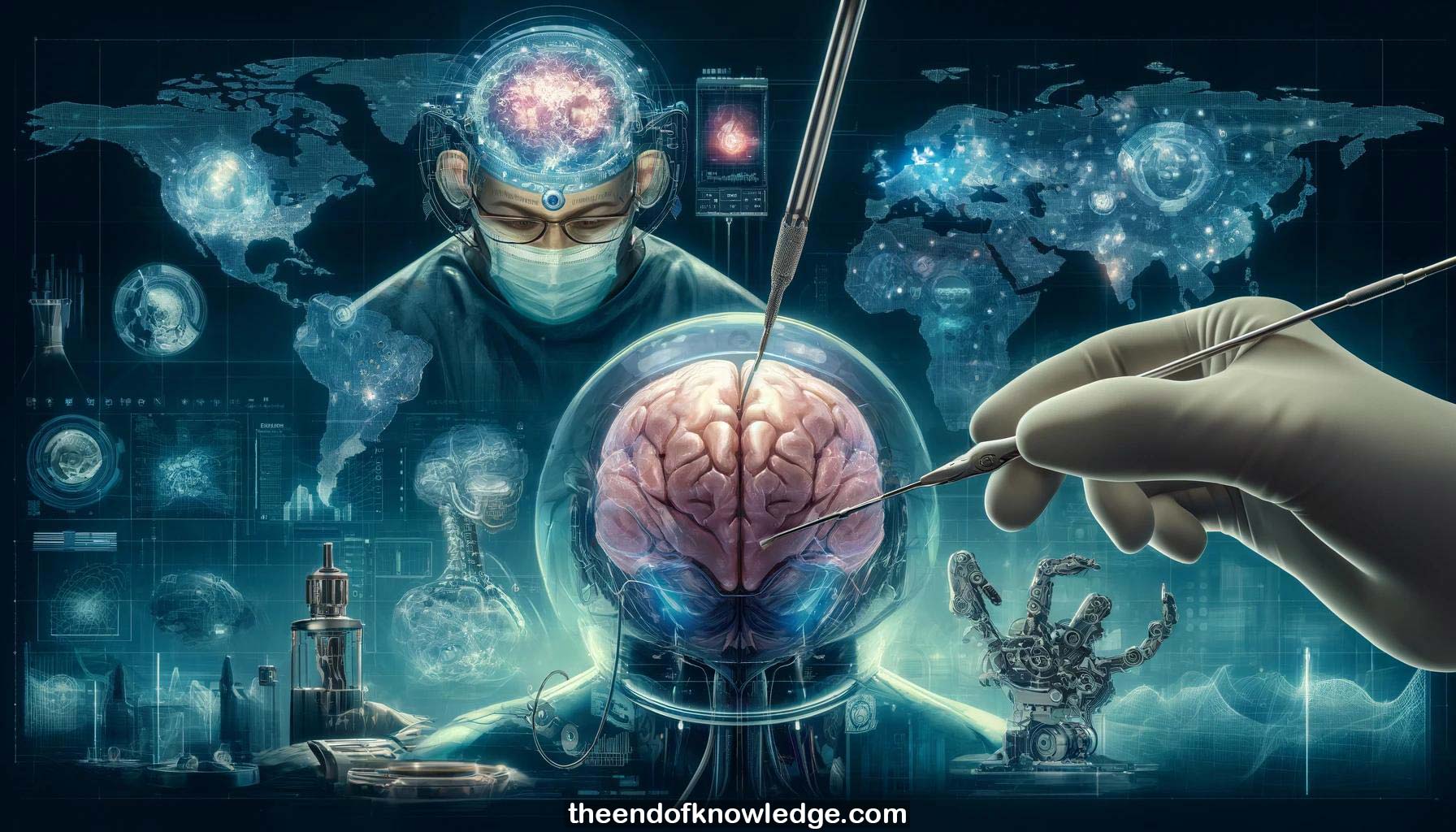 >
>
Concept Graph & Resume using Claude 3 Opus | Chat GPT4 | Llama 3:
Resume:
1.- Dr. Christoph Guger discusses high gamma mapping with electrocorticogram (ECoG) for brain-computer interfaces, involving opening scalp and placing ECoG electrodes.
2.- Guger's company G.Tec does research, sales, and hardware production related to brain-computer interfaces in various locations worldwide.
3.- Projects like seizure AI for epilepsy monitoring and high-frequency oscillations as biomarkers are enabled by invasive brain-computer interface technology.
4.- In surgery, the neurosurgeon places ECoG strips/grids on the brain, connected to a biosignal amplifier for high gamma mapping.
5.- Neuromodulation involves measuring from and stimulating different brain regions like the thalamus in real-time based on brain activity.
6.- Gerd Pfurtscheller discovered event-related desynchronization - imagination of left/right hand movement activates the contralateral hemisphere, easily measurable with EEG.
7.- Implants require precise electrode placement. Kai Miller implanted 64 ECoG channels in an epilepsy patient to study resting vs movement spectra.
8.- High gamma (80-100 Hz) has less energy at rest than during movement, with high spatial resolution localized to single electrodes.
9.- Finding optimal electrode positions is crucial for ECoG. Repetitive movements cause high gamma to diminish as the spinal cord takes over.
10.- ECoG grids have 1 cm spaced platinum electrodes, are single-use, and cost ~1000. 64 channels output via cable from scalp.
11.- Early ECoG BCI experiments in 2004 by Gerwin Schalk enabled 2D cursor control and later control of the video game DOOM.
12.- Schalk's videos impressed the US Army, leading to research funding. High gamma overshot occurs with novel movements, diminishing with repetition.
13.- Experiments with Dr. Kamada in Japan in 2011 used MATLAB/Simulink for real-time ECoG processing to classify hand gestures with high accuracy.
14.- A telepresence experiment allowed an epilepsy patient to control a 1 million robotic system in Japan via ECoG BCI.
15.- Code-modulated visual evoked potentials avoid seizure risk in SSVEP experiments with epilepsy patients, as demonstrated by Christoph Kapeller.
16.- Gerwin Schalk and Peter Brunner developed the Siegfried BCI system, rapidly mapping cortical activity during various tasks in epilepsy patients.
17.- The temporal dynamics of high gamma activity during hand gestures were decoded with outstanding speed and accuracy by Kai Miller.
18.- Electrical cortical stimulation (ECS) is the clinical standard for cortical mapping but has limitations compared to high gamma mapping.
19.- ECS involves manually probing electrode pairs with increasing current, observing effects, and noting functions of stimulated regions.
20.- ECS is time-consuming, can trigger seizures if current is too high, and lacks the temporal/spatial resolution of high gamma mapping.
21.- High gamma mapping with Cortec-U enables visualization of seizure propagation pathways to guide surgical interruption by neurosurgeons.
22.- Paradigms for high gamma mapping include resting, solving Rubik's cube (fingers), tongue/kiss movements (mouth), and story listening (auditory cortex).
23.- Validation studies show strong overlap between high gamma mapping and BOLD fMRI for finger tapping in sensorimotor cortex.
24.- Temporal dynamics during picture naming show visual cortex, then Broca's/Wernicke's language areas activating to process and respond.
25.- Tests confirm high gamma mapping produces consistent results. Comparison with ECS shows close correspondence for identifying expressive language areas.
26.- Cortec-U is used worldwide. Research by Nuri Firat Ince using micro-ECoG grids found ultra-high gamma up to 1 kHz.
27.- Cortico-cortical evoked potentials (CCEPs), first described by Riki Matsumoto in 2004, map networks by stimulating one area and recording elsewhere.
28.- High-resolution ECoG allows precise somatotopic mapping of individual fingers in sensorimotor cortex for sensation and movement.
29.- Somatosensory evoked potentials from median nerve stimulation quickly identify the central sulcus by polarity reversal of waveforms across electrodes.
30.- ECoG enables fast, accurate control of robotic prosthetic hands, even replicating user errors, demonstrating effective brain embodiment of devices.
31.- In summary, the talk comprehensively covered the technology, applications, and research behind ECoG-based brain-computer interfaces for clinical and research purposes
Knowledge Vault built byDavid Vivancos 2024